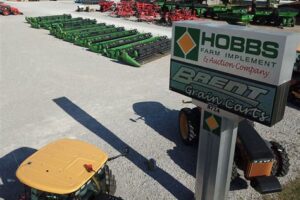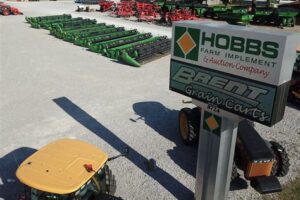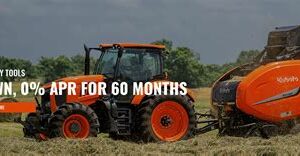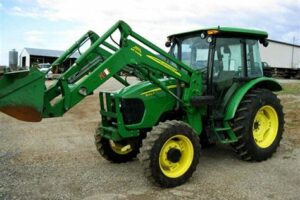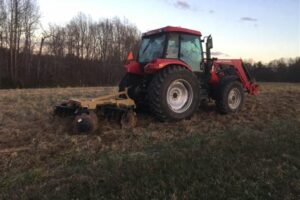Table of Contents
Discover a world of history and craftsmanship with antique farming equipment. Explore the rich heritage of agricultural practices through vintage tools, machinery, and implements used by our ancestors. Uncover the ingenuity and innovation of the past as you delve into the fascinating world of antique farming equipment.
Antique farming equipment holds a unique charm that transports us back to a time when agriculture was powered by sheer human strength and ingenuity. In a world dominated by modern machinery and advanced technology, these relics of the past serve as a reminder of simpler times and the remarkable evolution of farming practices. As we delve into the fascinating world of antique farming equipment, we discover a treasure trove of tools and machines that were once the backbone of agricultural communities. From primitive plows to intricately designed harrows, each piece tells a story of the perseverance and resourcefulness of our ancestors. Join us on a journey through time as we explore the rich history and timeless appeal of antique farming equipment.
Introduction
In the world of agriculture, antique farming equipment holds a special place. These timeless pieces of machinery offer a glimpse into the past, reminding us of the ingenuity and hard work of our ancestors. From plows to threshers, each antique farming equipment tells a unique story of innovation and perseverance. In this article, we will explore the fascinating world of antique farming equipment and delve into the significance of these historical artifacts.
The Evolution of Farming Equipment
Over the centuries, farming equipment has undergone a remarkable transformation. What once required manual labor and sheer physical strength has now been replaced by technologically advanced machinery. Antique farming equipment showcases this evolution, highlighting the progression from basic hand tools to complex mechanical devices. Understanding the history of these tools allows us to appreciate the advancements made in modern agriculture.
The Plow: A Testament to Ingenuity
In the early days of agriculture, the plow was an indispensable tool for farmers. It allowed them to till the soil efficiently, preparing it for planting crops. Antique plows were typically made of wood, with a metal blade attached to the front. The design varied depending on the region and the specific purpose of the plow. These antique plows serve as a testament to the ingenuity of our ancestors who relied on simple yet effective tools to cultivate their land.
The Thresher: Revolutionizing Harvesting
Harvesting crops used to be an arduous task until the invention of the thresher. Antique threshers were mechanical devices that separated grain from the stalks and husks, making the harvesting process much more efficient. These vintage machines typically consisted of a rotating drum with spikes or teeth that would thresh the crops. The invention of the thresher revolutionized agriculture, allowing farmers to increase productivity and feed larger populations.
The Reaper: A Milestone in Agricultural History
Prior to the reaper, harvesting crops was an incredibly labor-intensive task. The invention of the reaper marked a significant milestone in agricultural history. Antique reapers were horse-drawn machines that cut and gathered crops in one swift motion. This innovation greatly reduced the manpower required for harvesting and propelled the agricultural industry forward. The reaper paved the way for modern combine harvesters, which have further streamlined the harvesting process.
Preserving the Legacy
Preserving antique farming equipment is crucial to maintaining our agricultural heritage. These artifacts offer a tangible connection to the past and provide invaluable insights into the ingenuity and resourcefulness of our predecessors. Museums, historical societies, and dedicated collectors play a crucial role in safeguarding these pieces of history. Through careful restoration and documentation, antique farming equipment can continue to educate and inspire future generations.
Collecting Antique Farming Equipment
For enthusiasts, collecting antique farming equipment is a passion that allows them to immerse themselves in the world of agriculture and history. Collectors seek out rare and unique pieces, often restoring them to their former glory. Antique farming equipment auctions and trade shows provide opportunities for collectors to acquire these valuable artifacts. Apart from their historical significance, owning antique farming equipment can also be seen as a way to honor and appreciate the hard work and dedication of our farming ancestors.
Restoration: Reviving the Past
Restoring antique farming equipment requires both skill and dedication. Collectors strive to bring these relics back to life, ensuring they are in working condition while preserving their original charm. Restoration involves cleaning, repairing, and sometimes replacing parts to ensure the equipment can be used or displayed. This process allows collectors to showcase the functionality and craftsmanship of these historical marvels, keeping their stories alive.
Displaying Antique Farming Equipment
Whether in museums, private collections, or agricultural exhibitions, displaying antique farming equipment plays a vital role in educating the public about our agricultural heritage. These artifacts offer a tangible connection to the past, allowing visitors to appreciate the labor-intensive methods used by our ancestors. By showcasing antique farming equipment, we honor those who toiled the land before us and gain a deeper understanding of the progress made in modern agriculture.
Conclusion
Antique farming equipment holds a special place in our history, serving as a testament to the ingenuity and hard work of our farming ancestors. From plows to threshers and reapers, these timeless pieces of machinery tell the story of agricultural evolution. Preserving and collecting antique farming equipment allows us to honor and appreciate the legacy of those who paved the way for modern agriculture. As we continue to advance technologically, let us not forget the lessons and inspiration that antique farming equipment provides.
The importance of preserving antique farming equipment
Preserving antique farming equipment is not merely a nostalgic endeavor, but a crucial step in understanding and appreciating the legacy of agricultural history. These machines are testimonies of our ancestors’ tenacity and resourcefulness, and by honoring them, we gain valuable insights into the progression of farming techniques.
The significance of antique tractors
Antique tractors hold a special place in the history of farming, representing the transition from animal-driven to mechanized agriculture. They serve as tangible reminders of the immense impact machinery had on transforming the way crops were cultivated, making them a fascinating area of study and an essential link to our past.
Antique plows: Symbols of perseverance and innovation
Antique plows are not simply rusted relics; they embody the persistence and inventive spirit of early farmers. These artifacts highlight the evolution and refinement of plowing techniques, from simple wooden plows to more complex designs, showcasing the ingenuity required to cultivate the land efficiently.
The versatility of antique harvesting tools
Antique harvesting tools, such as scythes and sickles, epitomize the handcrafted precision that characterized farming before modern machinery. These tools were instrumental in ensuring bountiful harvests and serve as reminders of the sheer physical effort and skill involved in reaping crops before the advent of automated methods.
The allure of antique threshing machines
Antique threshing machines, with their intricate mechanisms and powerful operations, captivate both farming enthusiasts and historians. These charming relics represent a pivotal development in agricultural technology, revolutionizing grain separation and significantly improving efficiency in the threshing process.
The role of antique seeders and planters
Antique seeders and planters are pioneering pieces of equipment that marked a significant shift toward precision farming. These inventions mechanized the process of sowing seeds and enabled farmers to achieve more consistent and regulated planting patterns, revolutionizing crop cultivation techniques.
The legacy of antique irrigation systems
Antique irrigation systems highlight the ingenuity and resourcefulness of early farmers, especially in arid regions. By employing gravity-fed or manually operated irrigation systems, agricultural communities were able to sustain crops and ensure water distribution effectively, leaving behind a legacy of sustainable water management practices.
Celebrating the craftsmanship behind antique farm implements
From the intricate blacksmithing work on plow blades to the elegant woodwork on handles, antique farm implements embody exceptional craftsmanship. These tools represent the convergence of functional efficiency and artisanal skill, reminding us of the pride early farmers took in producing their equipment, and inspiring current and future generations to cherish the legacy of bygone eras in agriculture.
Antique Farming Equipment: A Professional Perspective
1. Introduction:
As experts in the field of agriculture, we understand the significance of using modern technology and advanced farming equipment to maximize productivity and efficiency. However, it is important to acknowledge the value of antique farming equipment in certain contexts. Antique farming equipment, with its historical significance and unique characteristics, offers a distinct perspective on traditional farming practices that can still be beneficial in specific situations.
2. Preservation of Agricultural Heritage:
Antique farming equipment serves as a tangible representation of our agricultural heritage. Preserving and utilizing these machines allows us to gain insights into the methods and techniques employed by our ancestors. By studying and operating antique farming equipment, we can better understand the evolution of agricultural practices and appreciate the advancements made over time.
3. Educational Value:
Antique farming equipment presents an excellent educational tool for both experienced farmers and aspiring agricultural professionals. By using these machines, individuals can learn about the manual labor and skills required in the past, fostering a deeper appreciation for the challenges faced by previous generations. Additionally, antique farming equipment can be used in agricultural museums, farm tours, and educational programs to engage and educate the general public about the history and development of agriculture.
4. Sustainability and Self-Sufficiency:
In certain situations, antique farming equipment can be a practical choice for smaller-scale farms or homesteads aiming for self-sufficiency. These machines often require less fuel, maintenance, and spare parts compared to their modern counterparts, making them more sustainable and cost-effective in specific agricultural contexts. Additionally, utilizing antique farming equipment encourages a connection with the land and promotes a slower pace of work, aligning with sustainable farming philosophies.
5. Limitations and Challenges:
While antique farming equipment holds numerous advantages, it is important to acknowledge its limitations and challenges. These machines may lack the precision, speed, and efficiency of modern farming equipment, making them less suitable for large-scale commercial operations. Additionally, finding replacement parts and skilled mechanics familiar with antique machinery can be challenging, requiring dedicated efforts to maintain and repair these machines.
6. Conclusion:
Antique farming equipment, despite its limitations, offers a unique perspective on traditional farming practices and serves as a valuable educational tool. Preserving and utilizing these machines allows us to connect with our agricultural heritage while promoting sustainability in certain farming contexts. Although they may not be suitable for all situations, antique farming equipment deserves recognition and appreciation within the agricultural community.
References:
[Insert references here]
Thank you for visiting our blog and taking the time to learn about antique farming equipment. We hope that this article has provided you with valuable insights into the history and significance of these tools in agriculture. As we conclude our discussion, let us recap some of the key points we have covered.
First and foremost, antique farming equipment holds immense historical value. These tools were once the backbone of agricultural practices, helping farmers cultivate their land and provide for their communities. They represent a bygone era when manual labor was the norm and innovation in farming techniques was essential for survival.
Moreover, antique farming equipment serves as a testament to human ingenuity and resourcefulness. Each tool was carefully crafted to fulfill a specific purpose, whether it be plowing the fields, harvesting crops, or tending to livestock. The intricate designs and craftsmanship displayed in these tools highlight the dedication and skill of the individuals who created them.
Lastly, the preservation of antique farming equipment allows us to connect with our agricultural past and appreciate the advancements made in modern farming practices. By understanding the challenges and limitations that early farmers faced, we can better grasp the significance of today’s technological advancements and the impact they have had on food production.
In conclusion, antique farming equipment offers a window into the past, showcasing the resilience and creativity of those who came before us in taming the land. We encourage you to explore further and delve deeper into this fascinating subject. Whether you are an avid collector, a history enthusiast, or simply curious about the evolution of farming, antique farming equipment is sure to captivate your interest and provide valuable insights into our agricultural heritage. Thank you once again for joining us on this journey of discovery!
Video Antique Farming Equipment
Below are some commonly asked questions about antique farming equipment:
-
What is considered antique farming equipment?
Antique farming equipment refers to machinery, tools, and implements that were used in agricultural practices during the past. This can include items like plows, seeders, cultivators, harvesters, and threshers, among others.
-
How old does farming equipment need to be to be classified as antique?
While there is no strict age requirement, farming equipment is generally considered antique if it dates back to at least 100 years ago. However, some collectors may consider equipment from the early to mid-20th century as antique as well.
-
Where can I find antique farming equipment for sale?
You can find antique farming equipment for sale through various sources. These include online marketplaces, specialized antique farming equipment auctions, local farm equipment dealers, antique shops, and even farm equipment museums.
-
What factors should I consider when buying antique farming equipment?
When purchasing antique farming equipment, it is essential to consider factors such as its condition, functionality, rarity, historical significance, and authenticity. It’s advisable to thoroughly research the specific equipment you are interested in and consult with experts or experienced collectors.
-
Is it possible to restore antique farming equipment?
Yes, it is possible to restore antique farming equipment. Many enthusiasts and collectors take pleasure in restoring these pieces to their original working condition. However, restoration requires expertise, access to replacement parts, and a commitment to preserving the equipment’s historical accuracy.
-
Can antique farming equipment still be used in modern farming practices?
While antique farming equipment may not be practical for large-scale modern farming, some pieces can still be used for certain tasks on smaller farms or as decorative items. However, it is important to consider safety, efficiency, and the availability of replacement parts when contemplating their use.
-
How can I properly maintain and care for antique farming equipment?
To properly maintain and care for antique farming equipment, it is crucial to keep it clean, store it in a dry and protected environment, and periodically lubricate moving parts. Regular inspections and proper handling will help prevent deterioration and ensure its longevity.
We hope these answers provide useful information about antique farming equipment. If you have any further questions, feel free to ask!

